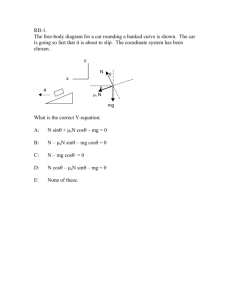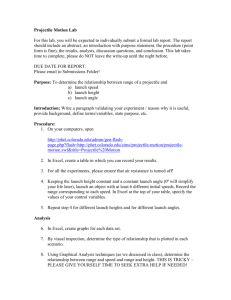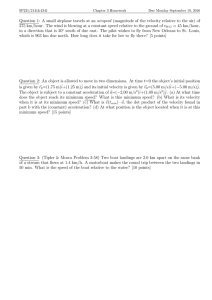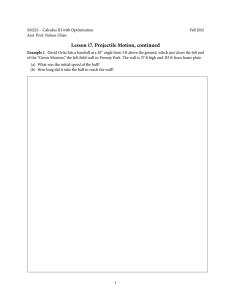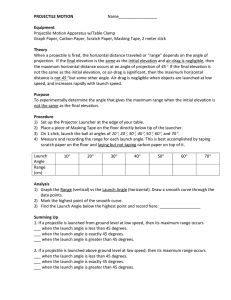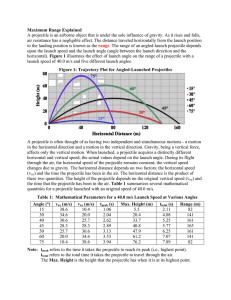Maximum Range of a Projectile Launched from a Height—C.E. Mungan,... reference: TPT 41:132 (March 2003) gR h
advertisement
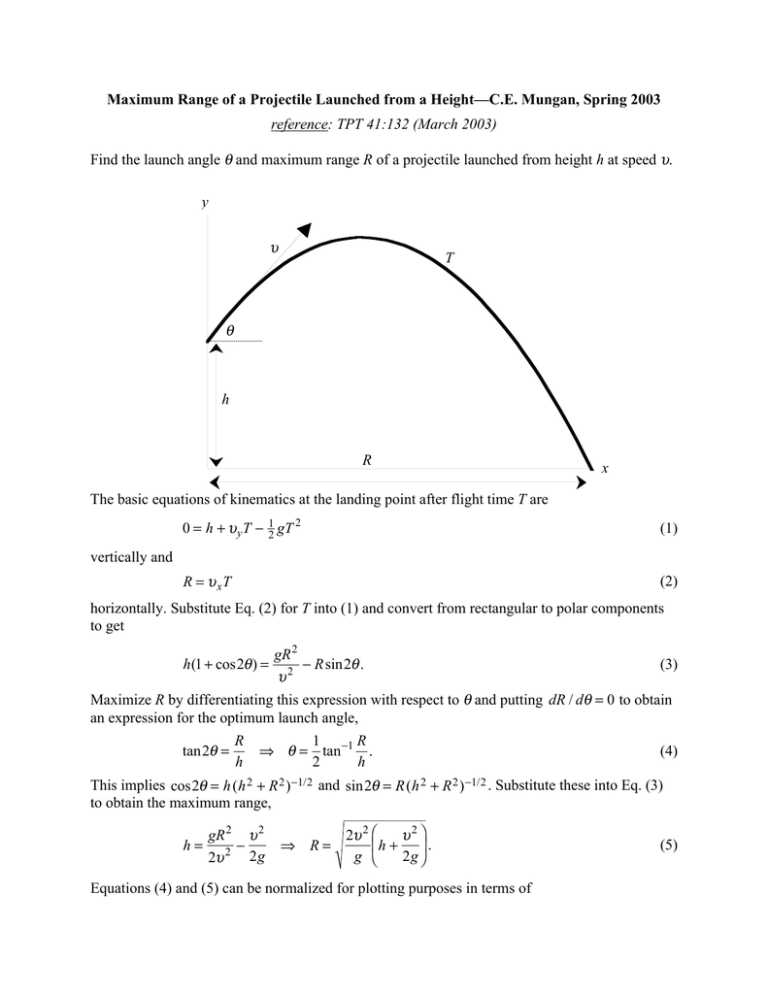
Maximum Range of a Projectile Launched from a Height—C.E. Mungan, Spring 2003 reference: TPT 41:132 (March 2003) Find the launch angle q and maximum range R of a projectile launched from height h at speed u. y u T q h R x The basic equations of kinematics at the landing point after flight time T are 0 = h + u y T - 12 gT 2 (1) R = u xT (2) vertically and horizontally. Substitute Eq. (2) for T into (1) and convert from rectangular to polar components to get gR 2 - R sin 2q . u2 (3) 1 R fi q = tan -1 . 2 h (4) h (1 + cos 2q ) = Maximize R by differentiating this expression with respect to q and putting dR / dq = 0 to obtain an expression for the optimum launch angle, tan 2q = R h This implies cos 2q = h ( h 2 + R 2 ) -1/ 2 and sin 2q = R ( h 2 + R 2 ) -1/ 2 . Substitute these into Eq. (3) to obtain the maximum range, h= gR 2 u 2 2u 2 2 g fi R = 2u 2 Ê u2 ˆ Áh + ˜ . 2g ¯ g Ë Equations (4) and (5) can be normalized for plotting purposes in terms of (5) R0 ∫ u2 , g (6) the maximum range for a surface-to-surface projectile (i.e., when h = 0 ), to get the normalized range R h = 1+ 2 R0 R0 (7) at a launch angle of 1 Ê R ˆ q = sec -1 1 + 0 . Ë h¯ 2 (8) These two equations are plotted below as a function of the normalized launch height h / R0 . 5 45 40 normalized range 4 35 30 3 25 20 2 launch angle (degrees) 15 1 10 0 2 4 6 8 10 12 normalized launch height As expected, R = R0 and q = 45˚ when h = 0 . In the other limit, R µ h 1/ 2 and q Æ 0˚ as h Æ • . More reasonably, notice that if you launch from a height equal to 1.5 times your surface range, you can get the projectile to go twice as far, provided you launch it at 26.6˚ (half of a 3–4–5 triangle angle).

